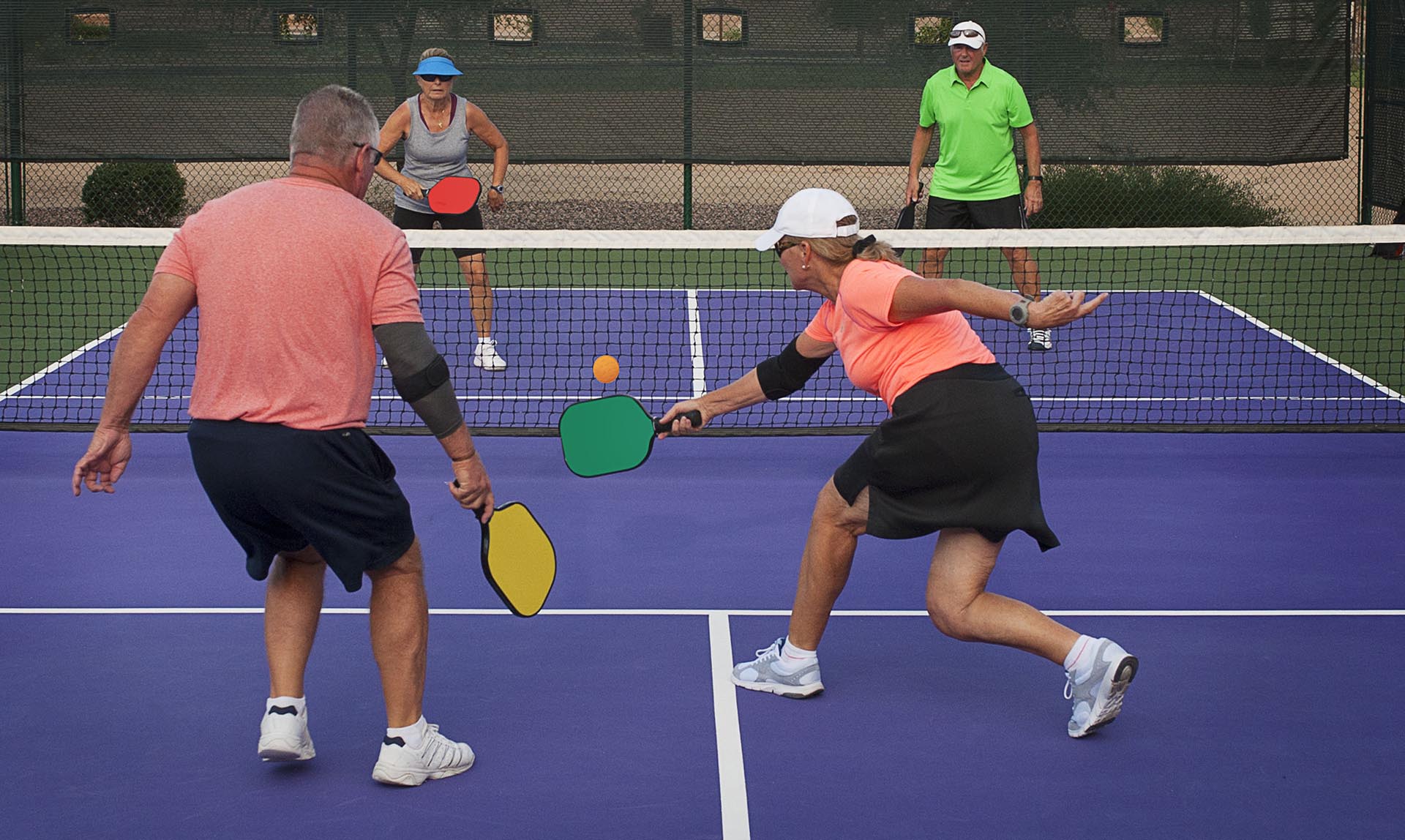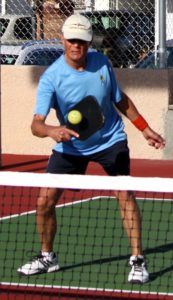
Tips to Keep You On The Pickleball Court
Most people know the game by now, but for the uninitiated, pickleball is something of a mix between tennis, racquetball and ping pong. Players use special paddles and a wiffle ball, and games take place on tennis courts with specific pickleball lines. While nets and court sizes are smaller than their tennis counterparts, the game is very quick, making it a convenient way to get in some exercise. Of course, those quick, explosive movements can also lead to injury; the most common of which are Achilles tendon or shoulder injuries.

I often see Achilles tendon injuries from pickleball players. It’s even more common in men over the age of 50 with a stiff or rigid ankle-foot complex. For many of these athletes there are often precursors to the injury that are ignored: tight calf/hamstring, plantar fascial pain, weak calf (unable to perform 20+ single leg calf raises), and occasionally lumbosacral stiffness and pain. Although an Achilles tear is a traumatic injury, there a few things pickleballers can do to help reduce the chance of injury.
Two of the best ways to stay on the court without injury are to have a consistent dynamic warm up for whole body along with a proper cool down when the match is done. Dynamic warm ups include activities that continuously move the body while activating prime muscle groups. Some examples of these simple activities may include lunges, squats, heel raises, shuffling, jump rope, and multidirectional movement. When it’s time to cool down it’s important to include some static stretching for the calf, hips, and lower back.

The other common injury area in any racket sport are the shoulders. All racket sports have components of overhead and rotational motion, sometimes in combination. It is also important to make sure our spine moves within the ranges we ask it to, if not we often end up compensating with our shoulders and can lead to stress and overuse injuries. Along with mobility into rotation, we also need to have stability through our core and spine stabilizers.
The activities and exercises needed to improve the core and spine stabilizers are often technical enough that they should be learned and practiced in a controlled PT setting. If you’re feeling soreness or pain when playing pickelball, especially in the shoulders or lower legs, scheduling a mobility screen with your physical therapist can identify potential problems that could lead to serious injury.
